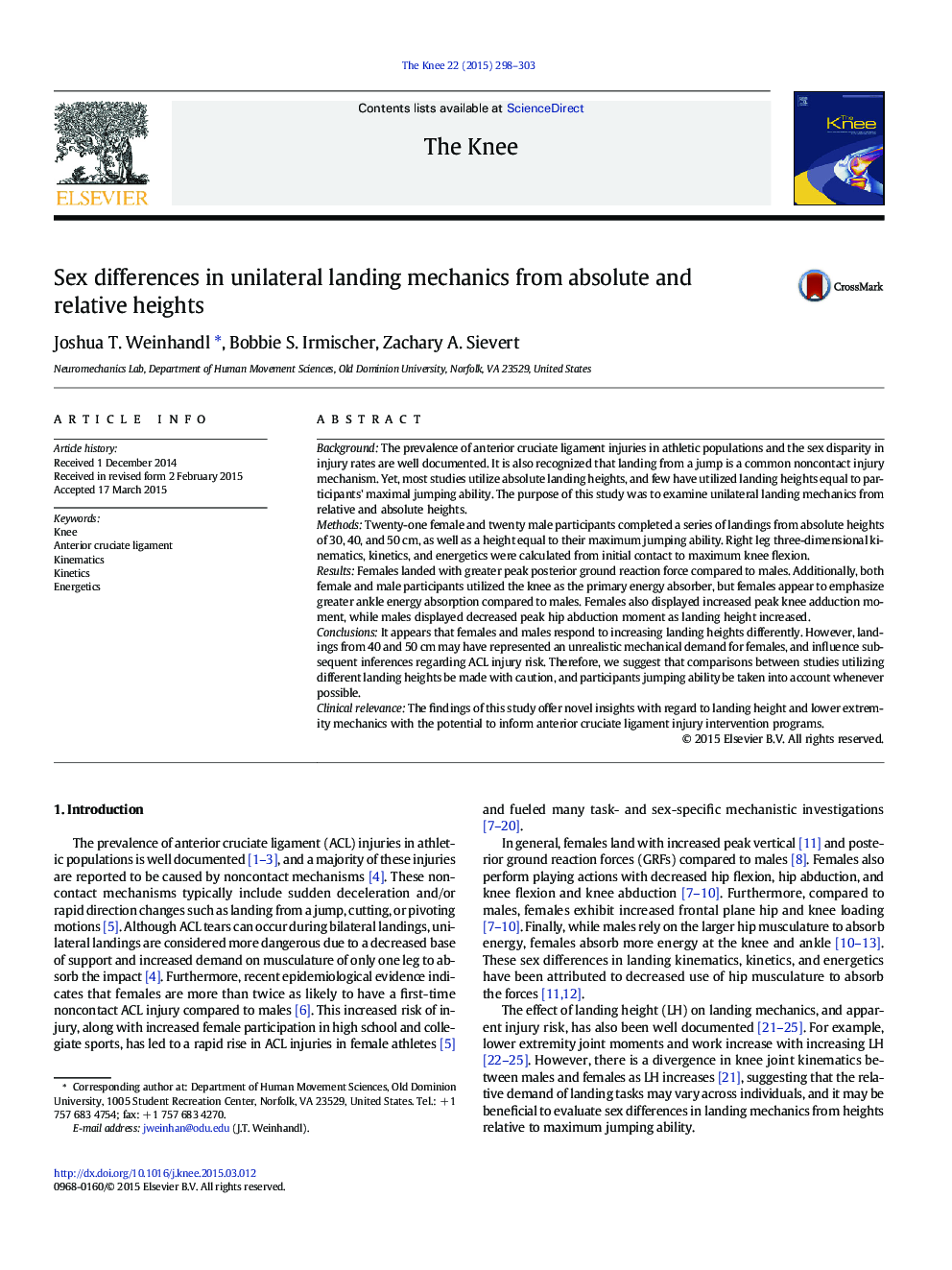| کد مقاله | کد نشریه | سال انتشار | مقاله انگلیسی | نسخه تمام متن |
|---|---|---|---|---|
| 4077252 | 1267209 | 2015 | 6 صفحه PDF | دانلود رایگان |
• We studied sex differences in unilateral landing mechanics from relative and absolute landing heights.
• Females and males respond differently to increasing landing height.
• Individuals jumping ability should be considered when assessing injury risk.
BackgroundThe prevalence of anterior cruciate ligament injuries in athletic populations and the sex disparity in injury rates are well documented. It is also recognized that landing from a jump is a common noncontact injury mechanism. Yet, most studies utilize absolute landing heights, and few have utilized landing heights equal to participants' maximal jumping ability. The purpose of this study was to examine unilateral landing mechanics from relative and absolute heights.MethodsTwenty-one female and twenty male participants completed a series of landings from absolute heights of 30, 40, and 50 cm, as well as a height equal to their maximum jumping ability. Right leg three-dimensional kinematics, kinetics, and energetics were calculated from initial contact to maximum knee flexion.ResultsFemales landed with greater peak posterior ground reaction force compared to males. Additionally, both female and male participants utilized the knee as the primary energy absorber, but females appear to emphasize greater ankle energy absorption compared to males. Females also displayed increased peak knee adduction moment, while males displayed decreased peak hip abduction moment as landing height increased.ConclusionsIt appears that females and males respond to increasing landing heights differently. However, landings from 40 and 50 cm may have represented an unrealistic mechanical demand for females, and influence subsequent inferences regarding ACL injury risk. Therefore, we suggest that comparisons between studies utilizing different landing heights be made with caution, and participants jumping ability be taken into account whenever possible.Clinical relevanceThe findings of this study offer novel insights with regard to landing height and lower extremity mechanics with the potential to inform anterior cruciate ligament injury intervention programs.
Journal: The Knee - Volume 22, Issue 4, September 2015, Pages 298–303
